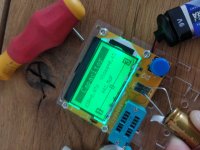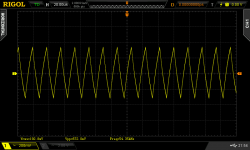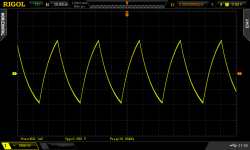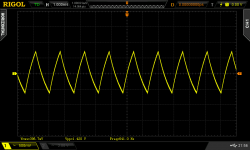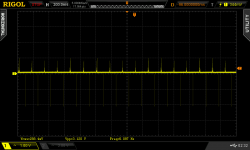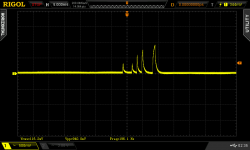Yes. Tolerances for electrolytics is typically +/- 20% (or worse), so this is just fine. Check the datasheet if you are not sure.
Thank you. This capacitors will go to the copy of X10 musical fidelity. They have 20% Like you write.
Electrolytic capacitors measure closer to nominal with 100Hz or 120Hz sinewave test frequency. Maybe this tester uses 1kHz to can also accommodate film and ceramic types but to still report somewhere near real for all. The higher the test frequency, electrolytics tend to be reported smaller. Fully fledged LCR meters allow you choose 100-120-1000-10000-100000Hz.
A typical DMM usually shows electrolytics closer to nominal. Mostly adopting a different test signal, looks like timing a ramp up repetitive charge. Good for estimating uF only. Especially Nichicon audio series caps tend to measure very close to nominal on a DMM.
A typical DMM usually shows electrolytics closer to nominal. Mostly adopting a different test signal, looks like timing a ramp up repetitive charge. Good for estimating uF only. Especially Nichicon audio series caps tend to measure very close to nominal on a DMM.
You are welcome. If you can, compare your digital multimeter's uF reading for this Nichicon and let us know.
I have an impedance bridge that measures capacitors very accurately at 1kHz. It's been professionally calibrated. I also have a Fluke DMM with a capacitance-check feature. Electrolytic capacitors always tend to measure lower on my bridge than on the Fluke. I've never been able to find out what test the Fluke uses. When I put a frequency counter on the Fluke on capacitance check, I couldn't get a reading, and I can't find a description of the test in the meter manual.
And Nichicons, in particular, often seem to measure low. When you think about it, more foil area = more capacitance, so the manufacturers probably save money on making them lower than nominal value. Over hundreds of thousands of capacitors, I guess it adds up.
And Nichicons, in particular, often seem to measure low. When you think about it, more foil area = more capacitance, so the manufacturers probably save money on making them lower than nominal value. Over hundreds of thousands of capacitors, I guess it adds up.
It also depends on brand/type and (accepted) production tolerances. Some time ago -20% ...+50% was normal at some brands.
Here are oscilloscope captures of four DMM models capacitance mode output signals I took. Connected at their test leads with a coax that has crock ends and a male BNC on its other end. They send out a similar sawtooth style periodic signal of very different frequency each. The Fluke 87V differs by sending mainly negative going very short lasting pulses.I have an impedance bridge that measures capacitors very accurately at 1kHz. It's been professionally calibrated. I also have a Fluke DMM with a capacitance-check feature. Electrolytic capacitors always tend to measure lower on my bridge than on the Fluke. I've never been able to find out what test the Fluke uses. When I put a frequency counter on the Fluke on capacitance check, I couldn't get a reading, and I can't find a description of the test in the meter manual.
Attachments
*All the above meters delay the more to dispaly a reading the larger the value a capacitor, thus they derive an answer through some charging time calculation.
- Home
- Design & Build
- Parts
- Nicichon FG fine gold
